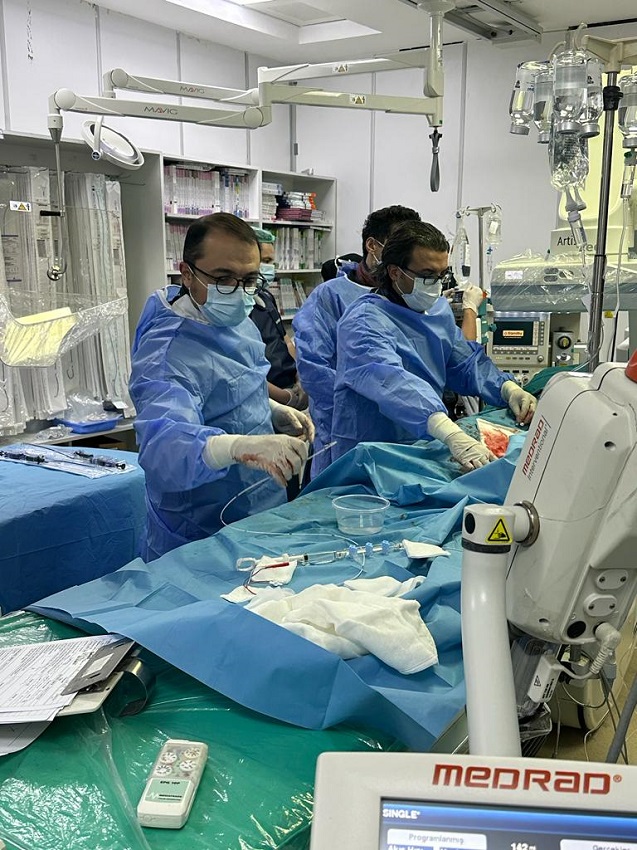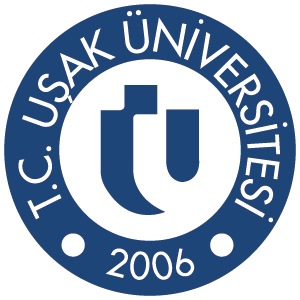- Hızlı Erişim
- Bologna


For the first time in Uşak, Transcatheter Aortic Valve Implantation- TAVI (non-surgical replacement of the heart valve by entering through the groin) procedure was performed at Uşak University Training and Research Hospital by Department of Cardiology Faculty Member Assoc. Prof. Dr. Özkan Candan.
.jpg)
Uşak University Rector Prof. Dr. Ekrem Savaş said, “I congratulate our team who performed the Transcatheter Aortic Valve Implantation- TAVI (non-surgical replacement of the heart valve by entering through the groin) procedure, which has been applied in our country in recent years, for the first time in Uşak. I wish our patient a quick recovery. All our patients who come to Uşak University Training and Research Hospital should know that they are in good hands. Thanks to the academic knowledge of our professors and the technical equipment of our hospital, our patients leave our hospital with the necessary treatment.”

TAVI shortens recovery time
.jpg)
Stating that an advanced stenosis of the aortic valve was detected in the examinations performed on the 77-year-old patient who complained of dizziness and chest pain while walking a short distance, Uşak University Training and Research Hospital Cardiology Department Faculty Member Assoc. Prof. Dr. Özkan Candan gave the following information about the procedure: “Valve intervention was planned. We decided that TAVI was the most appropriate method for the patient. The TAVI procedure is performed in a full-fledged angiography or catheterization laboratory by a team of specially trained interventional cardiology doctors, anesthesia team, nurses and technicians. The aortic valve is located between the left ventricle of the heart and the aorta and is responsible for pumping blood from the heart forward throughout the body. Sometimes the structure of the valve deteriorates due to congenital defects and most of the time due to aging, calcification begins and the valve becomes unable to perform its function. Patients start to develop complaints. The most common complaints are fainting, dizziness, fatigue, shortness of breath and chest pain. Unfortunately, drug treatment has not been found to be beneficial in aortic stenosis and the most important treatment for aortic stenosis is valve replacement. For many years, valve replacement has been performed with a surgical method in which the chest cage is cut, the patient is anesthetized, the patient's heart is completely stopped during the procedure and the heart is connected to a lung machine. With this classical method, the patient stays in intensive care for days, is prone to infection, has a large incision wound in the chest wall and takes months to heal. It impairs the patient's comfort and quality of life for months. Aortic valve replacement has been performed by non-surgical method for 15 years in the world and 8-10 years in our country. In this method, it is usually performed in the angiography laboratory with an approach similar to the angiography procedure through the groin vein. One of the advantages of this method is that the patient is not fully anesthetized, so the waking time is very short. In addition, there is no incision scar on the patient's chest and therefore the recovery time is very short, intensive care stay is very short and the risk of infection is extremely reduced.”
Stating that this new method TAVI (Transcatheter Aortic Valve Implantation) is not suitable for every patient, Assoc. Prof. Dr. Candan said, "In our hospital, its suitability is evaluated by a team of cardiology, cardiovascular surgery and anesthesiologist, and it is performed especially in patients where open heart surgery is not suitable or high risk."
.jpg)

